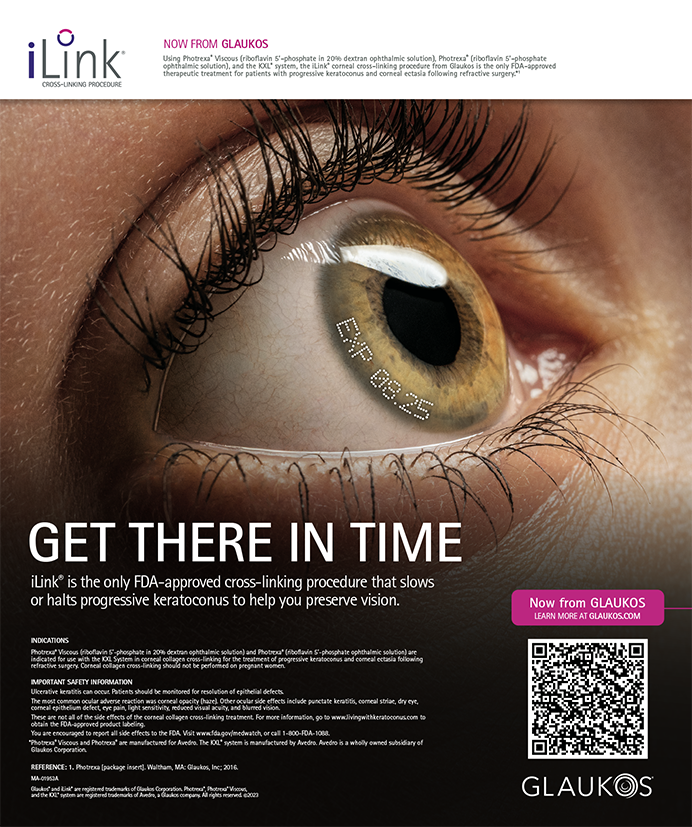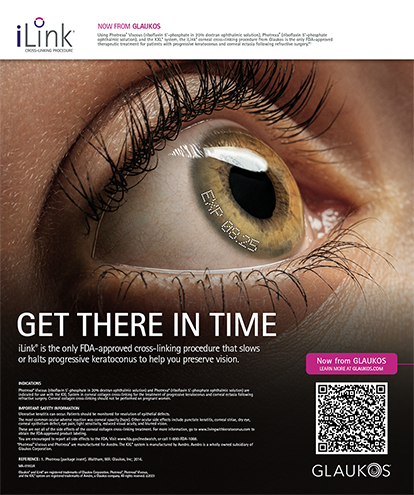From the time Michael Jackson's “Thriller” was released in 1982 to when Britney Spears debuted her first album in 1999, a generation as large as the baby boomers was born. Generation Y, commonly referred to as Millennials and the Net Generation, is changing the way that clinicians relate to patients. Although Generation Y members are sophisticated and comfortable with technology, they are unique in that they maintain a close relationship with their parents and are often involved in health care decisions, especially when it concerns new technologies and treatments that were not previously available. These individuals are usually the children of baby boomers or Generation Xers. As the first to grow up with computers in their homes, they have been called “digital natives.”1 With approximately 77 million Millennials in the United States, these patients, who grew up when LASIK was mainstream, represent a significant opportunity for LASIK practices.2
ENTICE A GENERATION
Generation Y displays different attitudes, behaviors, and values from previous generations due to the Internet and its effects on technology and the economy. The Net Generation is known for its seemingly effortless familiarity with media, digital technologies, and communication. While older patients read the magazines in the waiting room, Generation Y patients are connected to the world via an iPhone, iPad (both from Apple, Inc.), or other type of smartphone. They surf the Internet, text their friends, purchase items, make dinner reservations, and even book vacations on these devices. Your practice can most effectively and directly communicate with Millennials via an online presence, especially through smartphones with a mobile website, a practice application, or both. Without an online presence, it will be nearly impossible to attract these patients to your practice.
Providing an easy method for Generation Y'ers to share their positive experience at a LASIK practice will keep them engaged and generates more business from their connections. On the first postoperative day, when patients report their happiness with their vision, encourage them to “like you” on Facebook or write about their experience on Yelp or Google. Merely creating a Facebook page does not automatically make a practice Generation Y friendly. A Facebook page is only successful when patients see and use it.
As children of the baby boomers, Generation Y members have proven to be closer to their parents than their parents' generation was3 and thereby influence their parents' financial decisions. This fact, combined with the increasing number of baby boomers having cataract surgery, is extremely important to LASIK surgeons. According to Stephen G. Slade, MD, in an editorial from the November/December 2012 issue of Cataract & Refractive Surgery Today, “Baby boomers will not tolerate poor vision as willingly as their parents. They view aging as weakness. They have the money and will seek cataract surgery earlier than their parents did.”4 In the same way that baby boomers expect multirange vision, members of the Net Generation expect that their parents will have excellent results with both laser vision correction and cataract surgery. Beyond just the results, members of Generation Y expect that they and their parents will have an excellent experience, from reasonable wait times in the office to quick visual recovery after surgery. They will also influence their parents' choice of surgeon.
Not only are Generation Y'ers impressed by technology and educational resources, they expect it. LASIK practices will benefit from developing a strategy that uses quality educational materials and videos. The surgical counselor must be knowledgeable, well spoken, not pushy, and possess the right tools to demonstrate why a Millennial's mother or father should pay extra for advanced surgical options such as a presbyopia-correcting IOL, intraoperative aberrometry, and in some cases, surgery performed with a femtosecond laser.
ESTABLISH A COMPETITIVE EDGE
Personality surveys have shown that Millenials are more narcissistic than preceding generations.5 As a result, they have been known to have extremely high expectations. Also, Generation Y patients are not loyal to brands; the Internet has made them flexible. They will be quicker than others to take advantage of your free LASIK screening, but they will also do so at several practices before they decide where to undergo the procedure. Millennials will not necessarily return to the same practice where their aunt or cousin had LASIK for their own surgery.
The Washington Times called Generation Y'ers the victims of the economic crises.6 As unemployment rates are high for college and postgraduate students, many Millennials have had to take retail jobs and/or move back with their parents before finding the high-paying job they are qualified for to help pay off their student loans. When these individuals finally start their careers, however, they will likely consider spending disposable income on their vision. Their narcissism will drive them toward contact lens and spectacle independence. Although most of the Net Generation has the skill set to recognize that a $300-per-eye “chop shop” is not a smart choice (or they will read a horror story online), LASIK surgeons need to keep prices competitive by offering rates that are commensurate with practices in the surrounding area.
PRACTICAL STEPS
LASIK practices can integrate a few practical steps into their workflow to help attract Generation Y. First, counselors or surgical schedulers should follow up with patients who have cancelled their screenings or surgeries. This extra step may draw a patient back, or it may help when talking to future patients.
Second, remember that many optometrists are Millennials. Optometric relationships have been and will continue to be a long-standing and important part of a refractive practice. Because optometrists appreciate social media and quick interaction times just as much as your patients do, they are likely to refer LASIK candidates to a practice that has a good web presence, a blog, social media, and good reviews.
Third, appoint or hire an employee to answer email and website requests. This individual must reply quickly to requests, as the Net Generation members have instant access to email accounts on their phones and checks them regularly. A delayed response could cost your practice a potential patient.
Finally, speak the same language as Generation Y. This group of Americans is immune to most traditional marketing and sales pitches, having grown up with them since early childhood.7 In 2010, the Elon Journal of Undergraduate Research in Communications reported that students who decided to quit using social media showed the same withdrawal symptoms of a drug addict who quit their stimulant.8 LASIK surgeons need to recognize the power of social media and improve or update online outlets, perhaps by hiring a company to create a search engine-friendly website. Of course, this comes with a fee, but it costs less money than traditional marketing, and when Millennials decide they want LASIK, they will not turn on their TV or radio to wait for a commercial, they will open their Macbook (Apple, Inc.).
Laura Urdinlaiz, JD, is the physician liaison and marketing director at The Center For Excellence In Eye Care in Miami and is a marketing consultant for corneal and refractive practices nationwide. She acknowledged no financial interest in the products or companies mentioned herein. Ms. Urdinlaiz may be reached at (305) 598-2020; laura.urdinlaiz@gmail.com.
- Prensky M. Digital natives, digital immigrants. From On the Horizon. 2001:9(5). http://pre2005.flexiblelearning. net.au/projects/resources/Digital_Natives_Digital_Immigrants.pdf. Accessed November 18, 2012.
- Bristow M. Make way for Generation Y. Kiplinger. http://www.kiplinger.com/businessresource/forecast/archive/ how-generation-y-will-work-and-live.html. Published December 28, 2010. Accessed November 25, 2012.
- Gibbs N. How Millennials perceive a new generation gap. Time Magazine. http://www.time.com/time/magazine/ article/0,9171,1971433,00.htmlPublished March 11, 2010. Accessed November 18, 2012.
- Slade SG. A perfect storm. Cataract & Refractive Surgery Today. Published November/December 2012;12(11):5.
- Twenge J. Generation me: why today's young Americans are more confident, assertive, entitled, and more miserable than ever before. New York, NY: Free Press, a Division of Simon & Schuster, Inc.; 2006.
- Diamond J. Generation Y: victims of the economic crisis. The Washington Times. http://communities. washingtontimes.com/neighborhood/gen-y-economist/2012/nov/16/generation-why-victims-economic-crisis/. Published November 16, 2012. Accessed November 25, 2012.
- Schroer W. The social librarian. Generations X, Y, Z and the others. http://www.socialmarketing.org/newsletter/ features/generation3.htm. Accessed November 18, 2012.
- Cabral J. Is Generation Y addicted to social media? The Elon Journal of Undergraduate Research in Communications. 2011:2(1):5-13.


